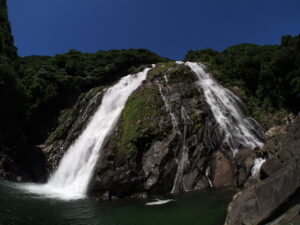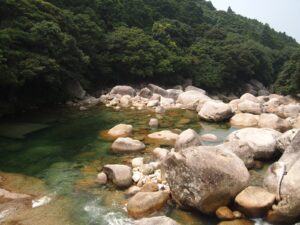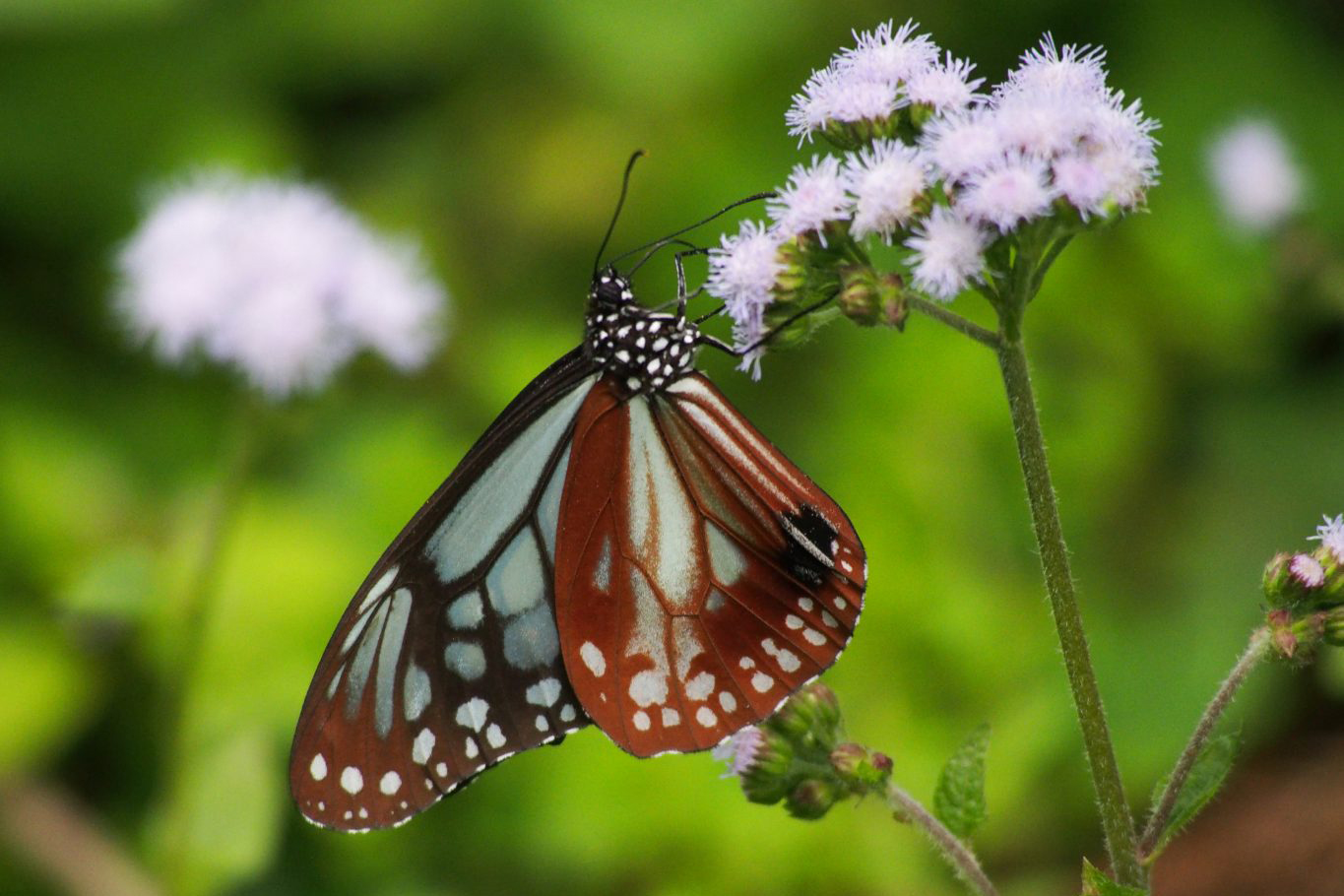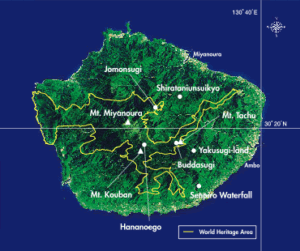A brief introduction to Yakushima island
Introduction
Where do we start when trying to make a concise introduction about Yakushima! It is such a fascinating island that both domestic and international visitors return to the island time & time again. The more you learn about Yakushima, the more wondrous it becomes which is why we would always encourage visitors to get a head-start to this fascination by selecting a YES Tour.
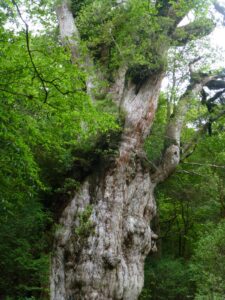 In 1993, Yakushima was one of the first two locations to gain World Heritage status for Natural Beauty in Japan (the other location is Shirakami Sanchi in Aomori). UNESCO claimed Yakushima to be the best example of bio-diversity in East Asia. This status as a site of natural beauty often overshadows the remarkable cultural side of Yakushima and unfortunately tourists often miss this important aspect of our island as they focus upon the natural scenery.
In 1993, Yakushima was one of the first two locations to gain World Heritage status for Natural Beauty in Japan (the other location is Shirakami Sanchi in Aomori). UNESCO claimed Yakushima to be the best example of bio-diversity in East Asia. This status as a site of natural beauty often overshadows the remarkable cultural side of Yakushima and unfortunately tourists often miss this important aspect of our island as they focus upon the natural scenery.
Yakushima’s eco-system ranges from sub-tropical to sub-alpine which makes it both the northern limit and southern limit for a wide variety of flora and fauna. This demarcation area is known as the Watase Line.
Yakushima is referred to as the ‘Alps of the Ocean’. The highest mountain peaks are just under 2,000m and the island has the highest mountains in Kyushu. Rather surprisingly, the neighbouring island of Tanegashima is one of the lowest areas of land in the country and the surprise is amplified when you discover that both Yakushima and Tanegashima share the same base rock stratum. The circular-shaped Yakushima is located around 100km south of Kagoshima City in the south of Japan.
The mountains of Yakushima offer excellent hiking trips, but the hiking doesn’t have to begin in the mountains as many of the trails begin close to the coast and rise steeply into Yakushima’s vast forests.
Yakushima is famed as being the home of the Yaku sugi – some of the most ancient living trees on the planet. The island also has indigenous sub-species of deer and macaque monkeys which out-number the human inhabitants on the island.
Our information on Yakushima wildlife is limited to only a few examples. A full compendium of Yakushima wildlife would require a website unto its own – particularly in the insect section.
Similarly, the tales and folklore of the island would also require a large tome. Even after being on the island more than a decade, we are still told new and interesting tales past down orally from generation to generation.
The sea around the island is abundant with a variety of marine life and this is thanks to a warm, swift flowing stream known as the Kuroshio current making its way from the tropics past the east coast of Japan. The rivers, streams and waterfalls of Yakushima flow with some of the purest water in the world and swimming in the rivers is a great leisure pastime for Yakushima families.
Many tourists arrive to Yakushima with the impression that the weather is always wet. There is one very misleading comment which pervades the internet regarding it raining every day of the month (and more). You’ll be glad to know that this isn’t the case. Yakushima also has many sunny days. However, we do encourage visitors to come to Yakushima with a positive attitude regarding rain as the picturesque moss-covered forests wouldn`t be as beautiful if it were dry all the time. Caution must be taken if you encounter heavy rain on the island as the rivers become very dangerous. To prevent the risk of accidents then the island authority sometimes closes the mountain access roads during extreme weather conditions as a necessary precaution. Yakushima does have the highest level of rainfall in Japan!
Explore our about Yakushima section to uncover the basic knowledge you may need to travel to the island. However, if you wish to get the most out of your visit then booking a YES Tour to learn about Yakushima’s rich culture, unique history and incredible ecology would be a good investment and a memorable experience.
Nature and History of Yakushima
World Heritage
Yakushima is a round-shaped island situated approximately 60 km south from the southern end of the Osumi Peninsula in the southern part of Kagoshima prefecture. One fifth of the island is registered as a World Natural Heritage Site of Natural Beauty. Yakushima gained World Heritage status in 1993. The World Heritage boundaries cover the center of the island and include the highest peaks on the island. There are 3 prongs extending to the east, south and west, but only the latter reaches down to the coastline (the Seibu Rindo Forest Path). The land designated for World Heritage protection also lies within the boundaries of the Yakushima National Park. The Yakushima National Park is a larger area than the World Heritage area and it includes most of the center of the island. The management of the World Heriage area falls to the 3 organizations – National Parks Department, Forestry Department and the local government.
Yakushima exhibits a rich flora, with some 1,900 species and subspecies, including ancient specimens of the sugi (cryptomeria japonica). 94 of these floral species are endemic. More than 200 of these species are at their southern latitude limit and many are at their northern latitude limit. Yakushima also contains remnants of a warm-temperate ancient forest that is unique in this region.
Yakushima’s conservation value is reflected in the 200 plant species which have the southern limit of their natural distribution on the island. The altitudinal continuum of the forests across some 2,000m is considered to be not only the best in the Japanese archipelago, but the best remaining example in East Asia. Ancient yaku sugi trees are of prime conservation value to the island. Sugi trees become yaku sugi when they are deemed to be 1,000 year old or more. Sugi under 1,000 years old are called ‘kosugi`. However, this definition is rather too simplistic as some sugi are deemed to be yaku sugi when they are younger than 1,000 years old. Yaku sugi are generally found between 600m – 1,600m.
There are as many as six mountain peaks over 1,800m high including Miyanouradake (1,935m above sea level) – the highest mountain in Kyushu.
The fauna of the island is diverse, including 16 mammal species. Four mammal sub-species, including Yakushima macaque and Yakushima deer, are endemic to the island. A further four sub-species are endemic to both Yakushima and the neighbouring island of Tanegashima. Among the 150 bird species present there are four, including the Ryukyu robin and the Japanese wood pigeon that are designated as Natural Monuments.
We should point out that since receiving World Heritage status there have been, and continue to be, a number of strains imposed upon the island. While the island’s forests are in a better condition then they may have been since the industrial logging began 400 years ago, there are aspects of the island’s rich heritage that have witnessed a detrimental effect since the World Heritage recognition. Since 1993 there has been a dramatic increase in the number of visitors to Yakushima and inevitably they have caused both an environmental stress upon the island as well as largely being unaware that their presence in the mountains slowly erodes away the cultural significance the highland has always held for the inhabitants of Yakushima. For visitors wishing to know more about these issues then we highly recommend booking a YES Tour so that the YES guide can offer you a far better understanding of the island during your visit to Yakushima.



